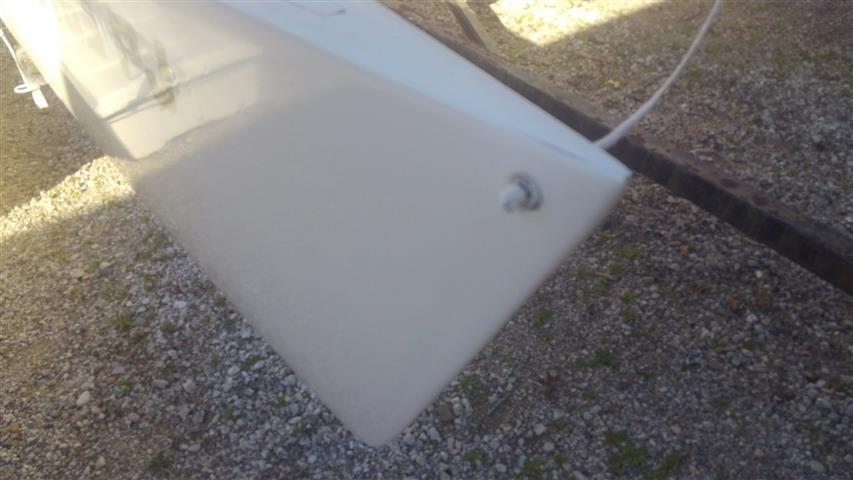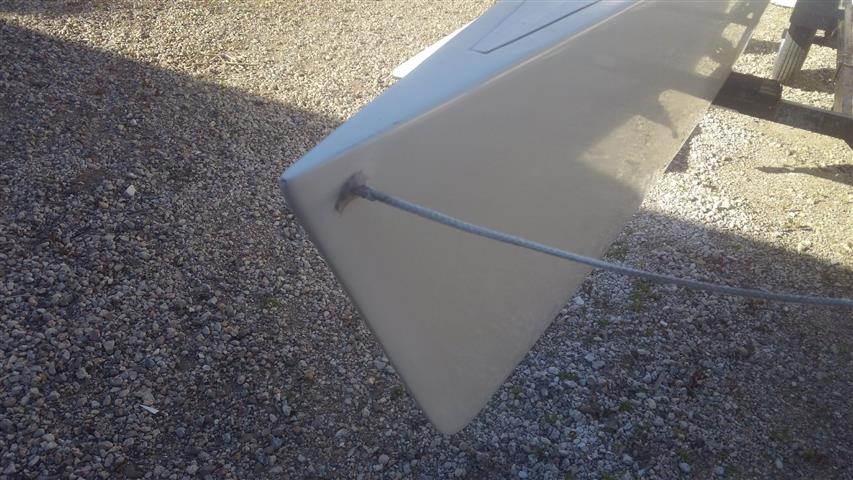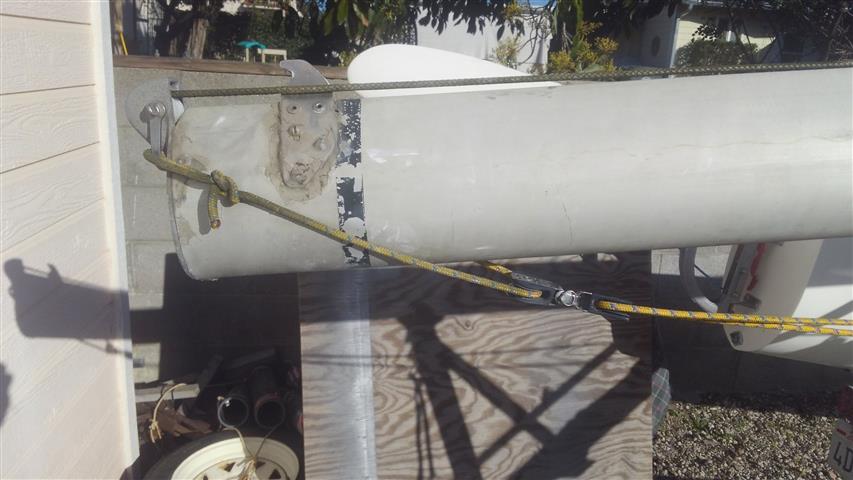My question is on the spinnaker rig which I am a complete noob on rigging. It's a homemade job using a carbon windsurfer mast. Docs with the boat include a receipt for a used Prindle 18 spinnaker, so I assume that's what the sail is from.
Two items of concern with the rigging:
1. The rigging for the pole consists of amsteel lines run to shackles at the bow tangs, and also amsteel lines run to the tips of the bows. The lines run through the hulls to stopper knots on washers on the outboard sides. I believe the bow tips are solid glass at this point.


I was concerned about the loads but came across photos online where other sailors have rigged P19 spin poles to the bow tips. I will probably shroud anchor pins at these locations as I have seen in some of the other sailor's photos:

Looking for opinions on the loads at this point, and whether I could blow out the bow tips.
2. The rigging for the head of the sail is concerning. The owner replaced the pin for the halyard pulley with a shackle, then rigged a line bridle to the shackle. (Given all the sealant on the old mast, I will be moving my other mast to this boat as I know it is sealed).

I'm concerned about the loads with the sail rigged to the head of the mast. Most rigs I see have the spin head rigged a few feet below the mast head. Any comments on this? I would like to rig the the boat tomorrow to store at the yard at the harbor, and would like to get this set up tonight. I figure with this rig I don't need to add a tang, but wanted to get some other opinions on it. Again, I am new with spinnakers so will only be using this in light air for now.
Edited by mattson on Mar 15, 2019 - 01:28 PM.
--
Bill Mattson
Prindle 19 "Gelli Bean"
Prindle 19 "Cat's Pajamas"
Nacra 5.2 (Will sail her a bit and let her name herself)
--



